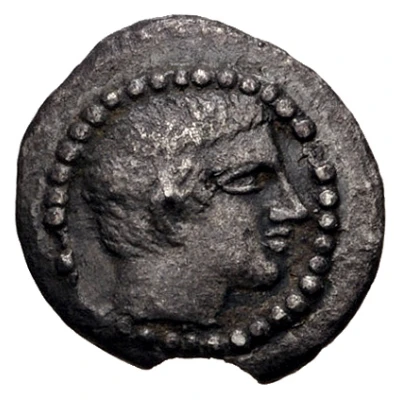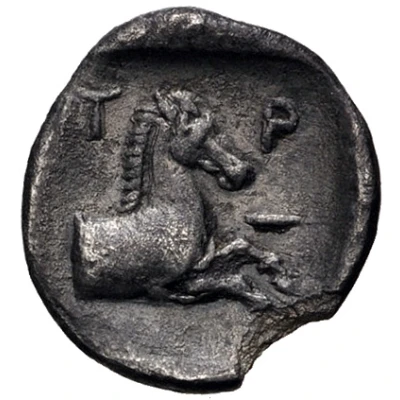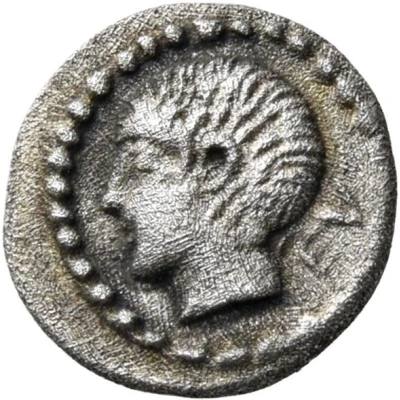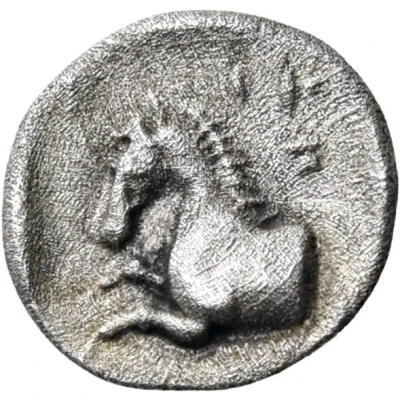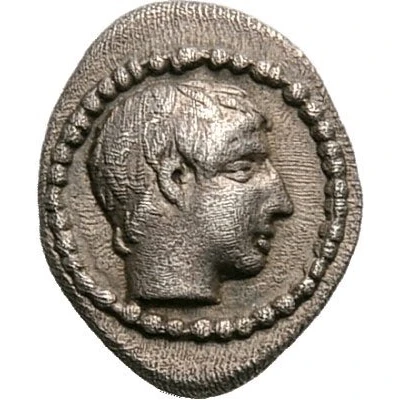
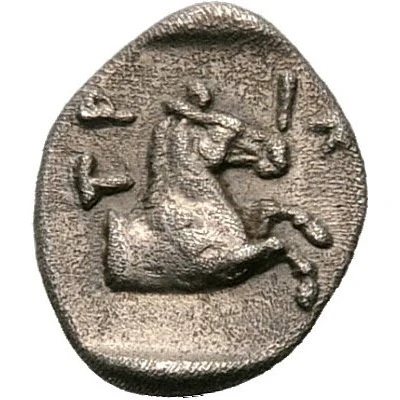

© Nomos AG
Hemiobol 440 BC - 400 BC
| Silver | 0.58 g | - |
| Issuer | Trikka (Thessaly) |
|---|---|
| Type | Standard circulation coin |
| Years | 440 BC - 400 BC |
| Value | Hemiobol (1⁄12) |
| Currency | Drachm |
| Composition | Silver |
| Weight | 0.58 g |
| Shape | Round (irregular) |
| Technique | Hammered, Incuse |
| Demonetized | Yes |
| Updated | 2024-10-10 |
| Numista | N#171338 |
|---|---|
| Rarity index | 100% |
Reverse
Forepart of horse to right within shallow incuse
Script: Greek
Lettering: ΤΡ ΙΚ
Comment
Seemingly unpublished.
Interesting fact
The Hemiobol coin was used as a form of currency in ancient Greece, specifically in the region of Thessaly, and its design features a unique combination of elements. On one side, the coin features the head of a gorgon, a mythical creature with snakes for hair, while on the other side, it depicts a horse and rider. This combination of a monstrous creature and a powerful animal was meant to symbolize the balance between the natural world and human civilization. It's also worth noting that the coin was made of silver, which was a valuable and widely used metal in ancient Greece, and its weight of 0.58 grams makes it a relatively small coin. Despite its size, the Hemiobol coin played an important role in the economy of ancient Thessaly and is now a valuable artifact for collectors and historians.
